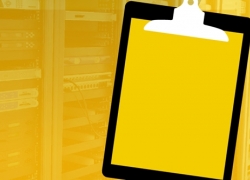The ins and outs of DCIM integration
The ins and outs of DCIM integration

By definition, data center infrastructure management's (DCIM) goal is to consolidate the oversight of facility and IT functions into a single interface. In a sense, this makes DCIM comparable to an enterprise resource planning (ERP) tool, but for the data center. And like ERP, DCIM needs to integrate into the applications and systems that play supporting roles in the management of the entity as a whole, primarily because it only performs as promised if it actually shows you everything you need to see.
Looked at another way, data centers are the engines of modern business, including any e-commerce platform, all web-based software, most content providers and countless others. Every piece of that engine needs to be configured to connect with the dashboard – DCIM – and vice versa to verify performance optimization. The risk of a failure is disrupted operations, or unplanned downtime that leaves you and your customers stranded.
Proper DCIM integration and implementation will help you avoid that situation. Here's how:
REST API: A prerequisite for proper DCIM integration
"REST architecture should be seen as a prerequisite for any DCIM solution."
REST (Representational State Transfer) APIs have become the beating heart of countless web-based service applications. They're open, flexible, salable and they can facilitate integrations with fewer resources.
Thus, REST architecture should be seen as a prerequisite for any DCIM solution. They enable cross-platform integrations between DCIM and third-party solutions, which helps maximize real-time data aggregation and analysis for more precise and comprehensive insights. This also facilitates more possibilities for optimizing data center workflows and creating real-time monitoring and alerts for critical equipment and environmental conditions.
Long story short, DCIM with a REST API can support practically any type of open protocol that you might find in a data center: SNMP, Modbus TCP, Modbus RTU, BACnet, LONworks, Niagara, Hardwired I/O and oBIX. As of this writing, that's only a handful of DCIM vendors.
That brings us to hardware
DCIM is as much about hardware is as it is software. This is a simple fact that goes overlooked far too often, according to The Stack contributor, Venessa Moffat.
"[F]or a DCIM implementation to be successful, software alone is not the answer – we need to understand and design our entire data center architecture," Moffat wrote. "We should also be looking at the right hardware, systems integration, consulting, training and staff skills, as well as internal organizational and process changes."
Part of the problem with modern DCIM implementations is that they often lack the level of circumspection Moffat describes above. Seamless integration may facilitate the free, bi-direction flow of data. But even then, you're limited to your data sources. In other words, are you actually collecting the right data about your IT and facilities equipment – temperature, airflow, humidity, power, footprint, billing, etc. – and are you collecting enough of it? Where are your sensors positioned? How many do you have? These should not be afterthoughts. They must be treated as fundamental considerations of a strategic DCIM deployment.
Remembering the most important supporting infrastructure of all
People. Even with an open API, DCIM implementation can be significantly expedited and simplified when you have a knowledgeable team to help you with any integration or deployment challenges that you may run into. Support services should include:
- Install and setup
- Integrations
- Sensor placement
- Ongoing system maintenance
- Consulting
- Customer support
The DCIM market will grow at a compound annual rate of 15 percent between now and 2020, primarily because of its potential to streamline data center management. However, it's imprudent to assume that DCIM will solve all your problems, or even to say that you will get ROI, without the right infrastructure setups, API architecture, supplemental tools and support.
Do DCIM right, and it will do right by you.




